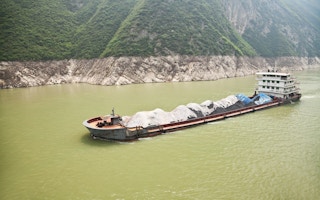Japan and China remain among the world’s top coal industry lenders and underwriters, says a report. This despite both countries declaring intent to go carbon-neutral as part of their commitments to climate target set out in the Paris Agreement.
According to the study, the top financiers and investors behind the global coal industry (between October 2018 to October 2020) provided loans amounting to US$315 billion with the top three being Japanese — Mizuho (US$22 billion), Sumitomo Mitsui Banking Corporation (US$21 billion) and Mitsubishi UFJ Financial Group (US$18 billion).
China, although accounting for less than six per cent of total lending to the coal industry, is responsible for 58 per cent of underwriting with Chinese banks channelling US$467 billion to the coal industry in the past two years.
Earlier this month while addressing the Powering Past Coal Alliance, UN Secretary-General António Guterres said phasing out coal was the “single most important step to get in line with the 1.5-degree goal”. The Alliance includes countries, states and businesses committed to dropping coal from the energy sector.
Mizuho, Sumitomo Mitsui Banking Corporation and Mitsubishi UFJ Financial Group have each released statements that they will not fund new coal projects. But there are exceptions to these, and Vung Ang 2 falls into these exceptions, says Eri Watanabe, finance campaigner for 350.org Japan.
SciDev.Net has reached out to Sumitomo Mitsui Banking Corporation and Mitsubishi UFJ Financial Group for comments but has yet to hear back as of publication.
Mitsubishi Corporation, which is one of the companies under the Mitsubishi Group of Companies along with the Mitsubishi UFJ Financial Group, recently announced withdrawal from the Vinh Tan 3 coal-fired project in Vietnam.
However, the three Japanese banks are said to be financing the controversial Vung Ang 2 coal-fired power plant, says Watanabe.
The construction of Vung Ang 2 is being met with opposition from various groups who are calling on government and the private sector to withdraw support on charges that it goes against the Paris Agreement commitments.
“It is said that Vung Ang 2 is the last coal-fired power project that the megabanks would be involved in, but they still continue supporting coal-related companies, as you can see in the Global Coal Exit List,” says Watanabe.
She adds that Japanese banks also support fossil fuel investments such as the Line3 Tar sands pipeline in the US and the East African Crude Oil Pipeline in Uganda.
“Japan’s position as a major investor in, and lender to, coal comes as no surprise. Japan has historically been a key enabler of its own coal-fired power technology in developing nations around Asia via public finance support from the Japan Bank for International Cooperation (JBIC) and Japan International Cooperation Agency (JICA),” says Simon Nicholas, energy finance analyst at the Institute for Energy Economics and Financial Analysis.
“The financial support from JBIC in particular underpinned coal loans from Japanese commercial banks,” says Nicholas, adding that JICA is considering funding Matarbari 2, a coal-fired power plant in Bangladesh, years after it financed the construction of Matarbari 1.
The analysis, published by the environment and human rights nonprofit Urgewald, also revealed that Japanese commercial banks account for 24 per cent of the total lending to companies listed on the Global Coal Exit List within the past two years.
“The carbon neutrality declaration by Prime Minister [Yoshihite] Suga had not been translated into real measures to achieve that goal yet,” says Watanabe. In October 2020, 350.org released a press statement providing recommendations to Japan on what can be done for the country to align with the Paris Agreement goals.
Aside from China, banks from Japan and India also figure among the top five underwriters to the coal industry, accounting for US$59 billion and US$36billion, respectively. Banks from the three countries account for 70 per cent of the total underwriting for the coal industry.
According to Nicholas, Pakistan has requested debt relief from China “following construction of expensive Chinese coal power plants in the country”.
“China’s position reflects the size of its domestic coal industry, but it is increasingly looking like it will be the last pusher of its coal power technology on developing nations in Asia and Africa,” says Nicholas.
“
China’s position reflects the size of its domestic coal industry, but it is increasingly looking like it will be the last pusher of its coal power technology on developing nations in Asia and Africa.
Simon Nicholas, energy finance analyst, Institute for Energy Economics and Financial Analysis
“Coal has historically played an important role for many Asian countries, providing affordable energy to develop their economies and enabling universal energy access,” says Yongping Zhai, Chief of the Energy Sector Group at the Asian Development Bank.
“In 2018, coal generated almost 60 per cent of electricity in Asia. Coal-fired power stations often have a lifespan of more than 30 years while the average age of the Asian coal fleet is about 12 years. This means that phasing out coal will be a complex and enduring process,” says Zhai.
He warns though that Asia needs to act given its vulnerability to climate change. “Failure to reduce greenhouse gas emissions is likely to have a significant impact on human and ecological well-being and reverse the development gains in the region.”
“A well-balanced energy mix with an increasing share of renewable energy will be necessary for the foreseeable future. In particular, renewable energy should be deployed as default option to meet the incremental demand,” says Zhai.
This article was originally published on SciDev.Net. Read the original articl








